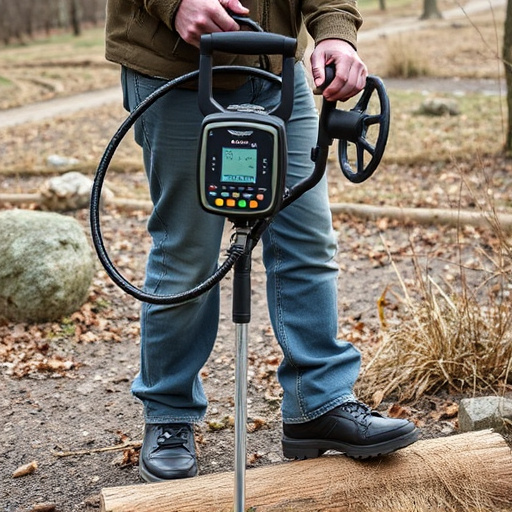Handheld metal detectors are compact, user-friendly tools with diverse applications. Using electromagnetic induction, they detect metals from treasure hunting to airport security. Features like adjustable sensitivity and pinpoint detection make them versatile, though depth of penetration, false positives, and operator skill can limit their effectiveness. Their portability and efficiency enhance safety and security across industries, from archaeology to consumer protection.
A handheld metal detector is a versatile tool that has revolutionized various industries, from archaeology to security. This compact yet powerful device uses electromagnetic induction to detect metallic objects beneath the surface, making it indispensable for a multitude of applications. In this article, we’ll explore how these detectors work, their common uses across different sectors, and the advantages and limitations of employing a handheld metal detector.
Handheld Metal Detector: A Versatile Tool for Various Applications
Handheld metal detectors are versatile tools with numerous applications across different industries and settings. Their compact design and ease of use make them ideal for a wide range of tasks, from treasure hunting and historical artefact exploration to security screening at events, airports, and public spaces. These devices have revolutionized how we locate and identify metallic objects, offering a portable and efficient solution compared to traditional, bulkier models.
With advanced features like adjustable sensitivity settings and pinpoint detection capabilities, handheld metal detectors can detect various metals with precision. This versatility allows them to be employed in environments where other types of detectors might struggle, ensuring that they remain indispensable tools for professionals and enthusiasts alike.
How Do Handheld Metal Detectors Work?
Handheld metal detectors operate on a simple yet powerful principle: they use electromagnetic induction to detect metal objects. When an alternating current passes through a coil, it generates a magnetic field around it. If a conductive object, like metal, enters this field, it disturbs the flow of electrons in the coil, creating a voltage difference between the two ends of the coil. This voltage is then converted into an audible signal or vibration, allowing users to pinpoint the location of metallic items buried or hidden beneath the surface.
The efficiency and accuracy of a handheld metal detector depend on several factors, including the quality of the coils, sensitivity settings, and environmental conditions. Different models offer various features like adjustable frequency ranges, search modes, and depth capabilities, catering to diverse applications from treasure hunting and archaeology to security screening and industrial inspections.
Common Uses of Handheld Metal Detectors in Different Industries
Handheld metal detectors have found their way into various industries, revolutionizing safety and security procedures worldwide. These portable devices are particularly valuable in scenarios where detecting metallic objects is essential, offering a quick and efficient solution compared to traditional methods. From historical preservation to everyday consumer protection, the common uses of handheld metal detectors span multiple sectors.
In the field of archaeology and historical research, they play a crucial role in uncovering ancient artifacts buried beneath the earth’s surface. Metal detectors enable archaeologists to swiftly scan large areas, identify potential sites, and carefully excavate valuable finds without causing damage. Furthermore, security personnel in airports, government facilities, and high-traffic public spaces rely on these devices to ensure safety by detecting weapons and other hazardous items. In retail environments, they assist in preventing shoplifting by identifying hidden metal objects, enhancing the overall shopping experience for customers while safeguarding businesses.
Advantages and Limitations of Using a Handheld Metal Detector
Handheld metal detectors offer several advantages that make them a popular choice for various applications, from treasure hunting to security screening. One of their key benefits is portability and ease of use; these devices are lightweight, allowing users to easily carry them and scan large areas in short time. They are versatile tools capable of detecting a wide range of metal objects, making them suitable for different environments, from beaches and parks to historical sites and museums. Additionally, handheld models often come with advanced features like digital displays, adjustable sensitivity settings, and discrimination capabilities, enabling users to filter out unwanted signals and focus on potential targets.
Despite their advantages, there are limitations to consider when using a handheld metal detector. These devices may not penetrate deep into the ground or through dense materials; their detection range is typically limited, requiring users to move slowly and methodically. Moreover, they can be susceptible to false positives due to mineral content in the soil or interference from nearby objects, which might require additional expertise and scrutiny to differentiate between actual targets and false signals. The accuracy of handheld detectors also varies based on factors like battery life, environmental conditions, and the skill of the operator.
